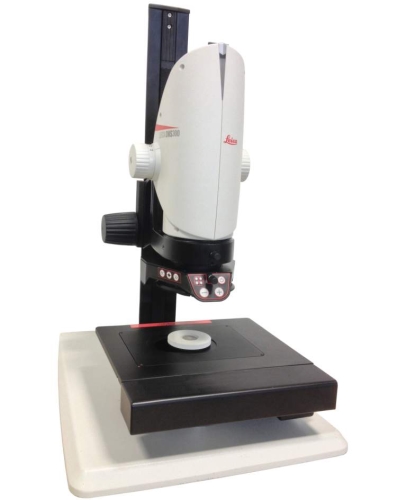August 26, 2013
Wetzlar, Germany – Leica Microsystems’ software module Leica Application Suite (LAS) Cleanliness Expert is now available for a broader range of microscopes. More users with a wider range of requirements will benefit from the precise measurements this tool offers to the industrial sector. Leica Cleanliness Expert performs cleanliness analysis and measurements of residual dirt as required in the automotive industry, for example. Users can measure length, breadth, and height of particles and differentiate between reflective and non-reflective particles. The software also documents the results, which are completely reproducible. As such detailed measurement is not needed in all cleanliness analyses, Leica Microsystems has adapted the Leica Cleanliness Expert to fit a variety of various requirements as well.
For conforming to ISO 4406 to determine the contamination level of hydraulic fluids, for example, the Leica DM2700 M, Leica DM4000 M LED or Leica DM6000 M are ideal microscope solutions. Users who need to conform to ISO 16232 when measuring and counting particles of various sizes to determine contamination of specific products, the Leica DM2700 M, Leica DM4000 M LED, Leica DM6000 M, or the digital microscope systems Leica DMS300 Cleanliness Expert or Leica DMS1000 Cleanliness Expert can be used. For inspection without user interaction and requiring reproducible illumination settings for comparable measurements, Leica Microsystems recommends that users choose the Leica DM4000 M LED or Leica DM6000 M.
“Users of Leica Cleanliness Expert say they appreciate the user-friendly interface, the detection algorithm for differentiation of reflective or non-reflective particles, the measurement of length, breadth, and height, bearing in mind these particles are not usually shaped evenly, and the transparency of the results,” says Dr. Kay Scheffler, Product Manager with Leica Microsystems. “We are pleased to offer Leica Cleanliness Expert to a broader segment of users now.”
Leica Microsystems is a world leader in microscopes and scientific instruments. Founded as a family business in the nineteenth century, the company’s history was marked by unparalleled innovation on its way to becoming a global enterprise.
Its historically close cooperation with the scientific community is the key to Leica Microsystems’ tradition of innovation, which draws on users’ ideas and creates solutions tailored to their requirements. At the global level, Leica Microsystems is organized in three divisions, all of which are among the leaders in their respective fields: the Life Science Division, Industry Division and Medical Division.
The company is represented in over 100 countries with 6 manufacturing facilities in 5 countries, sales and service organizations in 20 countries, and an international network of dealers. The company is headquartered in Wetzlar, Germany.













